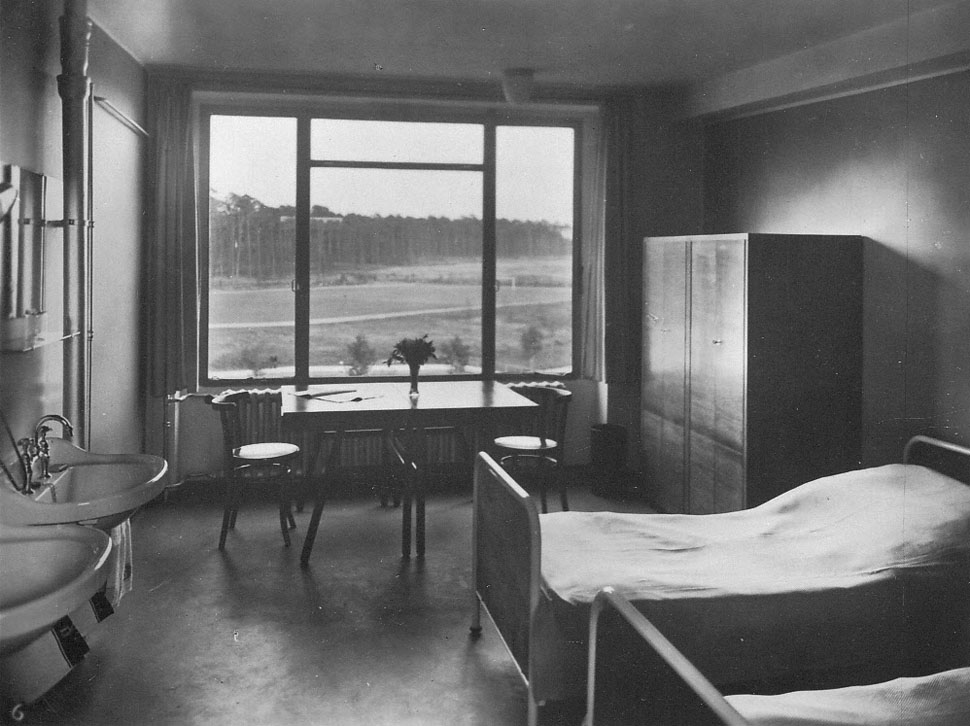The dormitory rooms at the Trade Union School were spartan: a double wardrobe (based on a Bauhaus carpentry-workshop design presumably made by Tischlerei Salzmann, a Berlin furniture manufacturer; no design drawings have yet been found for the wardrobe, and no other details exist other than the few clues available from a handful of photos), two desks, each with a Thonet chair, two wall-mounted consoles as bedside tables, two washbasins with a shaving mirror (a Zeiss-Ikon backlit mirror based on a design by Marcel Breuer; arguably the only luxury product in the entire room), two Thonet stools next to the beds for clothes storage, a coat stand at the entrance, two bedside rugs made of natural fibers, and two bed throws (possible designs from the Bauhaus weaving workshop; this is only an assumption not a definitive claim), and of course two beds for the temporary occupants.
The beds, numbered “sn 8311,” are furniture designs from the Bauhaus finishing workshop. According to Hannes Meyer’s building specifications, this model was called the Primissima. The 90 x 190 cm beds combined a tubular steel frame with plywood headboards and footboards – Hannes Meyer’s consolidating of all industrial-design workshops (carpentry, metal, weaving) in 1929 for reasons of efficiency is also visually reflected in this object in its combining of various materials and the teamwork between all workshops involved in finishing (metal workshop: steel frame; carpentry: headboard and footboard; weaving: bedspread and bedside rugs). The Bauhaus offered the Primissima in different versions for 45 Reichsmarks each, which amounts to a total sum of 5,369.35 RM for 120 bedframes, produced and delivered by Reinhold & Co. in Berlin with a modest discount.
Still preserved today in the archives of the Bauhaus Dessau Foundation is a version of the painted tubular-steel bed in black as well as another one in yellow with white plywood panels from the Schäfter apartment. The Trade Union School beds were painted completely white, which matched the wall-mounted washbasins on the opposite wall and visually emphasized the wooden furniture in the room. It was a collaborative effort by multiple Bauhaus workshops; participating designers were not identified by name. In any case, the bed style was increasingly common for this time and does not represent a particularly innovative design.
The dormitory rooms at the ADGB Trade Union School were furnished to complement the clear structure of the spaces with their large, eastern-facing windows. The connection between nature and interior was the clear focus; the furnishings were intended to be as simple and practical as possible in order to highlight and advance the overall design of the building complex. And this principle not only applied to the dormitory rooms and living spaces of the occupants, but ran like a common thread throughout all building sections.

